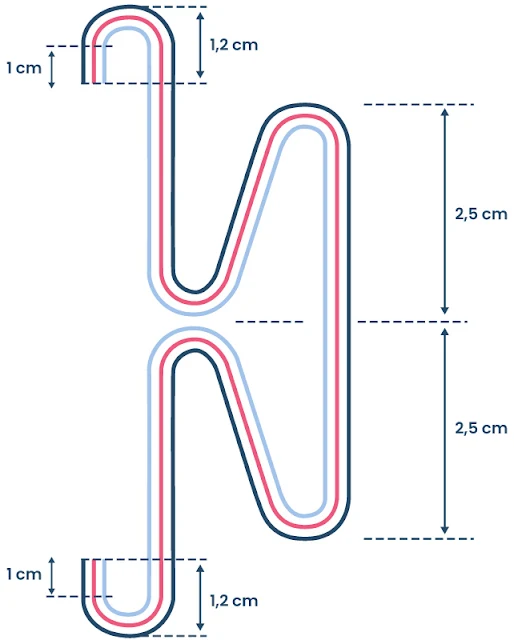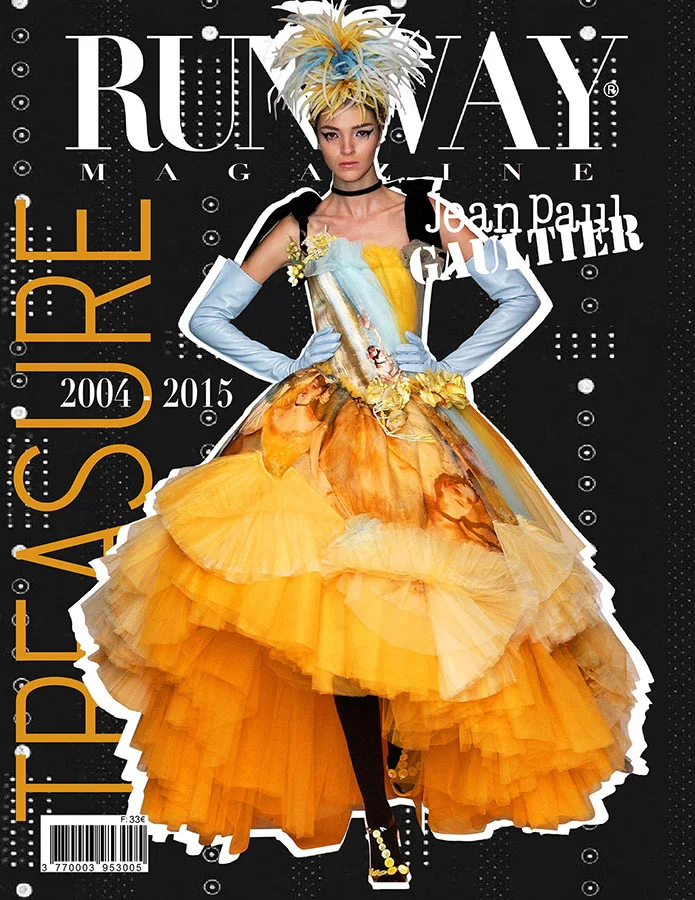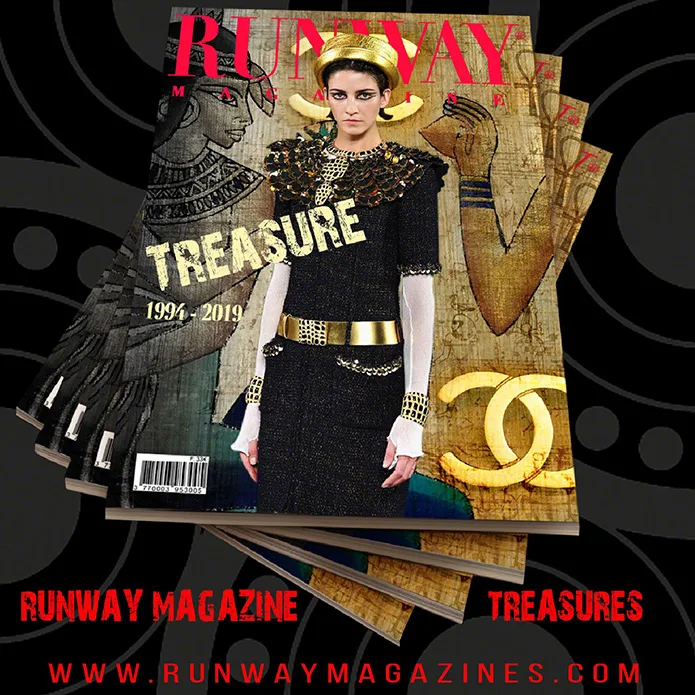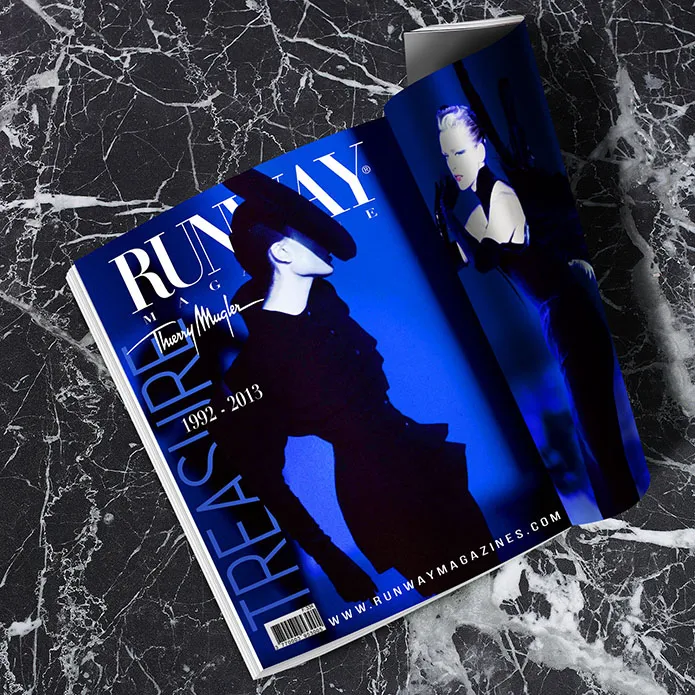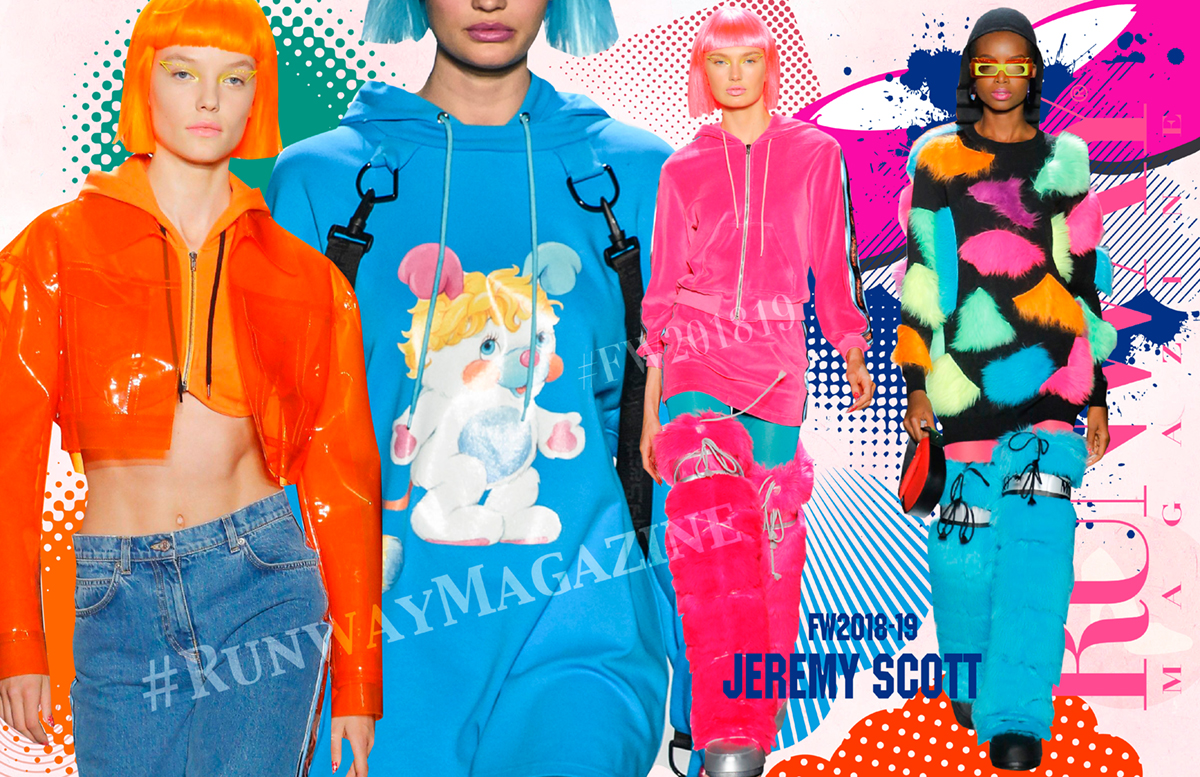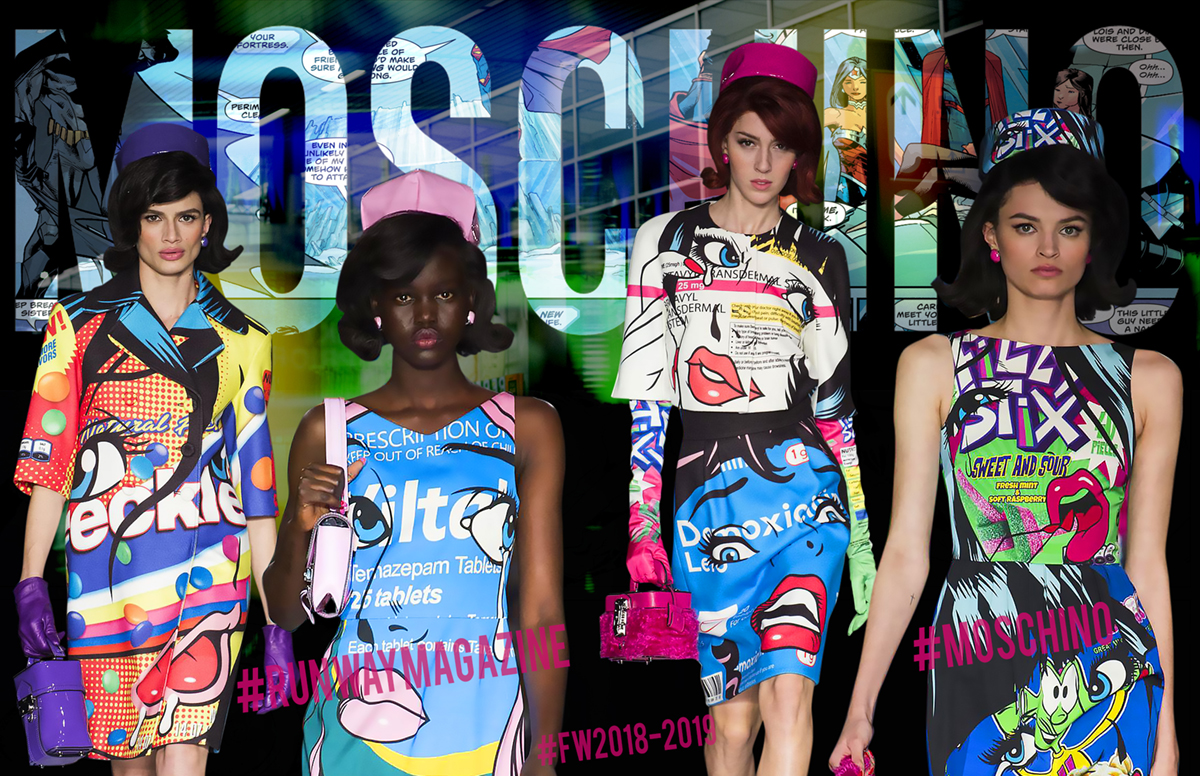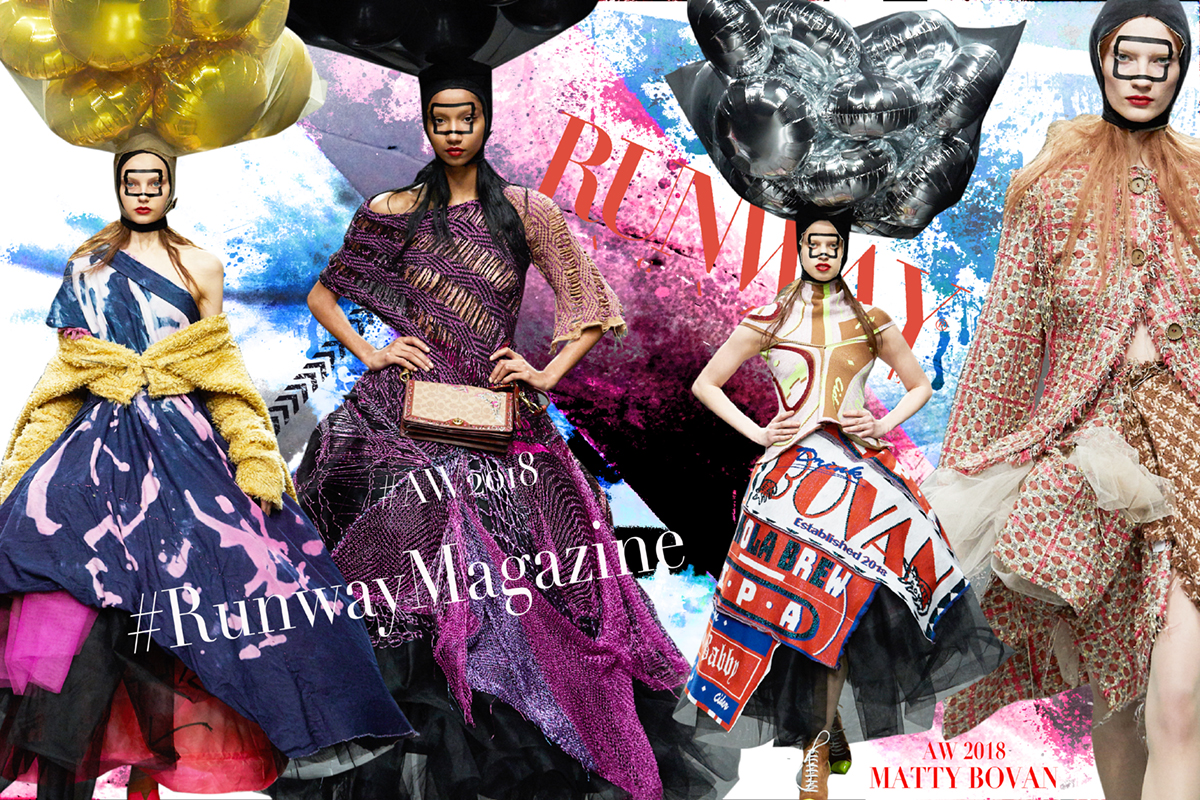RUNWAY MAGAZINE ® web-site - International Twofold Media known Worldwide. Trademarks registered.
Showing posts with label Runway Magazine France. Show all posts
Showing posts with label Runway Magazine France. Show all posts
May 20, 2020
April 28, 2020
Keep Mask and Carry On - How to make Protective Mask
Article by Editor-in-Chief of RUNWAY MAGAZINE Eleonora de Gray. Read Full version of the article HERE.
Yes, there are standards, and it is very important to follow them. The standards are very strict, so the tiny virus can’t go trough. That is important to understand and specially when we all start to make masks ourselves. And it explains why 1 layer of cotton mask – doesn’t do anything, doesn’t serve to anything, and basically only give false feeling of protection. Let’s start with description of the materials from which surgical masks and N95 made of:
Surgical masks are made from “melt-blown, non-woven fabric”. They have a 3-layer structure comprising materials like:
 |
| Keep Mask and Carry On - How to make Protective Mask |
Are there standards for production of protective face masks?
Yes, there are standards, and it is very important to follow them. The standards are very strict, so the tiny virus can’t go trough. That is important to understand and specially when we all start to make masks ourselves. And it explains why 1 layer of cotton mask – doesn’t do anything, doesn’t serve to anything, and basically only give false feeling of protection. Let’s start with description of the materials from which surgical masks and N95 made of:
Surgical masks are made from “melt-blown, non-woven fabric”. They have a 3-layer structure comprising materials like:
Waterproof non-woven layer (front)
Microfiber melt-blown non-woven fabric as filter (middle) – VERY IMPORTANT
Ordinary non-woven fabric (back)
“Melt-blown” fabrics are not the woven or knitted structures in, like t-shirts and jeans for example, they are more like paper-mache. The complex layering and overlapping of these thin plastic filaments creates a thicket-like maze that can trap the airborne particles. The thin plastic filaments in disposable protective face masks are a polymer called polypropylene. Polypropylene has two great properties for repelling viruses: it is negatively charged, and it is water-repellent. Now, viruses need water to remain viable, and are also negatively charged. And…. negative repels negative. Negatively-charged polypropylene molecule will repel the negatively-charged virus, and because polypropylene also repels water, the virus is denied the moisture it needs to be viable. Ta-da!!!
Three separate types of polypropylene negatively-charged fabrics in the surgical face mask: a breathable type for next to mouth, a microfiber filtering type in the middle (filter), and a barrier type on the side facing the world.
 |
| 3 layers surgical face mask |
N95 medical mask is almost the same as surgical mask but has more layers and fit tightly to the face. But the layers and principals are the same. Polyester also repels water, and is also negatively charged – just not as negative as polypropylene. That is why 1 layer of cotton, which has huge holes in relation to the size of virus, is useless. This kind of mask simply let virus go trough the cotton without any problem, as there’s no mask at all.
And now for the tricky part – the fabrics. There are all kinds of different fabrics, knits, cottons, polyesters, microfibers. What to choose? There are 2 organizations I know who provided all manufacturers and fashion designers with requirements of the fabrics for the masks for hospitals and for public. In USA all standards certified by The Food and Drug Administration (FDA). In France all standards certified by Association Française de Normalisation (AFNOR). Today they have million downloads from all over Europe standards guides to manufacturers and generally to everyone. Both these associations are on the same page.
AFNOR offers fabric guide to all public, which describes the quality of many fabrics which we can find and use. Do not hesitate – USE IT, CONSIDER IT AS ULTIMATE GUIDE !!! Quality of every fabric is described according to how airborne particles (virus included) can go trough or not, what fabric can be used as a barrier or filter. Today French government engaged several textile manufactures to produce protective masks for public according to AFNOR guide.
So let’s summer up and go according to AFNOR guide. The protective mask we can produce ourselves should contain several layers. Cotton can be used for front and back. And the most important middle layer is….
Microfiber Non-Woven Fabric as filter in face mask is THE SECRET WEAPON AGAINST VIRUS.
In another words the protective mask’s secret weapon lies in the middle layer. We can find this fabric in any supermarket. These fabrics we use for the napkins, for cleaning window and glasses “non-woven cloth”. It is very important to know that most air filtration are made of non-woven microfibers. Non-woven fabric is a fabric-like material made from staple fibre (short) and long fibres (continuous long), bonded together by chemical, mechanical, heat or solvent treatment. The term is used in the textile manufacturing industry to denote fabrics, such as felt, for example, which are neither woven nor knitted.
Why we use this microfiber non-woven fabrics for cleaning? Simply because microfiber textiles designed for cleaning on a microscopic scale. Why? Because they negatively-charged, and therefore this fabric keeps all dust and microbes on them. According to tests using microfiber materials to clean a surface leads to reducing the number of bacteria by 99%, whereas a conventional cleaning material reduces this number only by 33%.
So when it comes to the protective mask it is a vital importance to use this microfiber non-woven fabric as a filter. The one we can buy on the supermarkets for cleaning is close enough to the microfiber fabric used for medical masks. Another trick worth mentioning. As I already mentioned this microfiber fabric is negatively-charged, the cotton on another hand is positively-charged, as it made with natural materials.
 |
| Understanding - 3 layers protective mask |
And guess what happens when negatively-charged and positively-charged materials are interacting with each other when they put together in the mask? They are creating a electromagnetic field, which is for certain stops virus for getting to you. The virus particles glues to the microfiber filter and stays there. This is the secret of the filter.
So to simplify the protective face mask you are going to make yourself should have 3 layers. 2 cotton layers and in the middle as filter microfiber non-woven fabric.
How to make protective face mask yourself
If you choose thin microfiber non-woven material like table napkin for example, the mask can’t be washed and can’t be reused. And another if you can’t find non-woven microfiber material buy woven microfiber material. It won’t be that effective, but it’ll still be protective, as this material will still be negatively-charged and will create electromagnetic field when interacting with cotton. Also don’t buy non-woven materials where are some products in them, or made of some glass particles like many bags for vacuum cleaners. The best choice would be fabrics for cleaning windows. Fleece (it’s also non-woven polyester) will do too BUT is much less effective, as it not that strong, so negative field won’t be that powerful, and as a result electromagnetic field will be not that strong.
Let’s say non-woven microfiber cloth as filter will give 80-90% of protection, woven microfiber cloth will give 70% of protection, fleece will give 60% of protection.
For more better performance and more sewing experience I give couple of images from AFNOR.
March 8, 2020
2020 Trend “Marie Antoinette” by RUNWAY MAGAZINE
2020 Trend “Marie Antoinette” by RUNWAY MAGAZINE. Marie-Antoinette style became more and more popular. Quietly this style entered into the market. It all started from this…
 |
| Sofia Coppola – Marie Antoinette – movie 2006 |
Fancy mistake on the movie setting changed it all. In 2006 Sofia Coppola decided to keep this fancy few seconds in the movie, which changed fashion for the next 20 years.
Over the years designers tried to exercise their creativity and produce all kinds of shoes, and specially snickers.
 |
| Marie Antoinette style sneakers |
This fancy style never left the scene because it is always create the dream and the wonder. Some fashion designers tried to push it really hard.
Finally Thom Browne, great tailor from New York, with long history with Ermenegildo Zegna, reached the absolute in menswear and fine tailored suits and gone wild. He decided to go for the fancy extraordinary suits for men and women, and he is the one who created the scandal in Paris in July 2019.
He showed in Paris fine tailors for the football players (or something) in the style of Marie Antoinette – Spring Summer 2020 season. A year later for the Fall-Winter 2020-2021 season Jeremy Scott, great imitator, and artistic designer of Moschino, decided to go even further, and to make this Marie Antoinette style ultimately popular. He showed spectacular collection in Milan, and we all hope that “Marie Antoinette” classy punch into the face of fashion will work very well and became a new trend.
And here are some thoughts….
© Creative work of RUNWAY MAGAZINE / Eleonora de Gray – All rights reserved.
 |
| Thom Browne Spring-Summer 2020 by RUNWAY MAGAZINE |
 |
| Thom Browne Spring-Summer 2020 by RUNWAY MAGAZINE |
 |
| Thom Browne Spring-Summer 2020 by RUNWAY MAGAZINE |
 |
| Moschino Fall-Winter 2020-2021 by RUNWAY MAGAZINE |
 |
| Moschino Fall-Winter 2020-2021 by RUNWAY MAGAZINE |
 |
| Moschino Fall-Winter 2020-2021 by RUNWAY MAGAZINE |
So get your sneakers ready to go…. and don’t forget the bows.
Postscript. After publication of this article we saw little presentation of shows of Gherardo Felloni, the artistic director of the French brand Roger Vivier. He decided to show his new collection of extravagant shoes and line of jewelry by 2 models dressed in Marie Antoinette style with heads of cats in boudoir type of situation.
 |
| Roger Vivier Fall-Winter 2020-2021 presentation Paris by RUNWAY MAGAZINE |
And again sneakers must go on…
May 18, 2019
RUNWAY MAGAZINE covers
Presenting RUNWAY MAGAZINE issues and most famous RUNWAY MAGAZINE covers
Runway Magazine subscription available here.Read more about London Fashion, Paris Fashion, New York Fashion Milan Fashion on www.RUNWAYMAGAZINES.com.
Runway Magazine 2012 issues
Runway Magazine 2013 issues
Runway Magazine 2014 issues
Runway Magazine 2015 issues
Runway Magazine 2016 issues
Runway Magazine 2017 issues
Runway Magazine 2018 issues
Runway Magazine 2019 issues
Runway Magazine 2020 issues
RUNWAY MAGAZINE issue 2012
RUNWAY MAGAZINE cover 2012
RUNWAY MAGAZINE issue 2013
RUNWAY MAGAZINE cover 2013
RUNWAY MAGAZINE issue 2014
RUNWAY MAGAZINE cover 2014
RUNWAY MAGAZINE issue 2015
RUNWAY MAGAZINE cover 2015
RUNWAY MAGAZINE issue 2016
RUNWAY MAGAZINE cover 2016
RUNWAY MAGAZINE issue 2019
RUNWAY MAGAZINE cover 2019
Runway Treasure. Collection CHANEL. Read more.
RUNWAY MAGAZINE issue 2019
RUNWAY MAGAZINE cover 2019
Runway Treasure. Collection CHANEL Metiers d'Art. Read more.
RUNWAY MAGAZINE issue 2019
RUNWAY MAGAZINE cover 2019
Runway Treasure. Collection Jean Paul GAULTIER. Read more.
RUNWAY MAGAZINE issue 2019
RUNWAY MAGAZINE cover 2019
Runway Treasure. Collection Thierry MUGLER. Read more.
March 7, 2019
RUNWAY MAGAZINE ® Official
RUNWAY MAGAZINE ® Official
Read experts articles, see creative artwork and everything about
IMAGE, FASHION and MARKETING MIX.
RUNWAY MAGAZINE ® Collections
RUNWAY MAGAZINE ® Collections
RUNWAY NEW / RUNWAY NOW
Watch latest collections from runways all over the world.
RUNWAY MAGAZINE ® app
RUNWAY MAGAZINE Collections
Watch latest collections from runways all over the world
more than 5,000 downloads
be up to RUNWAY EXCLUSIVE
April 30, 2018
Mon RUNWAY SAC – Histoire d’une Photographe de Mode
Mon RUNWAY SAC – Histoire d’une Photographe de Mode.
Je suis photographe. Je vis et photographie l’une des plus belles villes du monde : PARIS. Je m’appelle Flavia Raddavero et je travaille dans la mode. Paris est une grande source d’inspiration. Paris a une grande histoire de la mode, de l’élégance, du savoir-faire français.
Depuis le début du XXe siècle, les grands photographes du monde entier ont été inspirés par sa beauté à couper le souffle.…Je les connais tous par cœur : John French, Richard Avedon, Jacques Boyer, Jean Philippe Charbonnier, et bien sûr le grand photographe anglais Norman Parkinson et l’américain Rodney Smith … Je peux en parler sans fin !
Je vois la ville de New-York par Rodney Smith en reflets de vitrines sur Saint Germain, je plonge dans son regard surréaliste, rue de Passy. J’aime New York ! Et oui, c’est mon histoire ! …Photographiée par moi à Paris. Je vois des formes et des objets de Norman Parkinson à La Défense. J’entends des histoires, des anecdotes sur les tendances, rue Faubourg Saint Honoré.
Je raconte mes anecdotes oùt je vois le présent dans le passé. Je photographie et relance ma propre histoire et l’histoire de ma ville. Je découvre à chaque prise de vue un nouvel angle de beauté intérieure. J’aime ce que je fais, et j’aime Paris ! Je sais combien d’histoires inédites je dois encore découvrir et les mettre en scène avec ma maitrise de la lumière.
Je suis une photographe de mode, et j’ai toujours besoin de mon sac RUNWAY MAGAZINE pour porter mon appareil photo, mes chaussures, mon cahier, où je mets mes notes et dessine mes Moodboards. Ce sac est conçu pour moi. Cela fonctionne pour moi à chaque moment de la journée. Cela fonctionne avec tout ce que je porte. Il m’amène tout le confort dont j’ai besoin.
C’est très personnel avec mes propres #hashtags. C’est La nouvelle tendance : “Mon #hashtag sur RUNWAY sac”. Le sac de RUNWAY MAGAZINE est mon point donné au monde au sujet de QUI JE SUIS et de ce que je fais.
Photographe de Mode Flavia Raddavero
© Photographer Laurent Lo
© Concept RUNWAY MAGAZINE
My RUNWAY Bag – Story of Fashion Photographer
I’m a photographer.I live and photograph the one of the most beautiful city in the world – Paris. My name is Flavia Raddavero, and I work in fashion. Paris is a great source of inspiration: Paris has great history of fashion, great history of elegance.
Great photographers from all over the world since beginning of XXth century were inspired by it’s breathtaking beauty. I know all of them by heart : John French, Richard Avedon, Jacques Boyer, Jean Philippe Charbonnier, and of course great English Norman Parkinson and great American Rodney Smith… I can go on forever.
I see New York city of Rodney Smith in reflections of vitrines on Saint Germain, I plunge into his surrealists perspective on rue de Passy.
I love New York. And yes, this is my story, shot by me in Paris. I see forms and objects of Norman Parkinson on La Defense. I can hear stories about trends on rue Faubourg Saint Honore.
I tell my stories about how I see present trough the past. I shoot and reshoot my own history and history of my city. I discover in every shooting new angle of internal beauty. I love what I do. And I love Paris. I know how many untold stories are still I’m to discover. I treasure light and time.
I’m a fashion photographer. And I always need my RUNWAY MAGAZINE bag with me to carry my camera, my shoes, my notebook, where I put my notes and draw my moodboards. This bag designed for me. It works for me every moment of the day. It works with everything I wear. It caries all comfort I need. It’s very personal : my hashtags are on it. It is a new trend “My #hashtag on RUNWAY bag”.
RUNWAY MAGAZINE bag is my given point to the world about who I am and what I do.
Fashion Photographer Flavia Raddavero
© Photographer Laurent Lo
© Concept RUNWAY MAGAZINE
April 2, 2018
Best of Fall Winter 2018 Paris – New York – Milan
February 21, 2018
Appel à Projets CREATEURS FASHION par le Ministère de la Culture
Le ministère de la Culture lance un appel à projets afin de soutenir les jeunes créateurs de mode dans le développement de leurs entreprises et pour accompagner leurs premiers investissements. Il est doté de 300 000 euros.
Ce nouveau dispositif sera ancré dans le réseau d’accompagnement existant dédié aux jeunes créateurs de mode. Il prend place dans un paysage de financements directs et indirects sans se substituer à d’autres dispositifs. Sa vocation est de soutenir le développement d’entreprises entre leur 3ème et leur 5ème année d’existence.
 |
| Ministre de la culture Francoise Nyssen |
À QUI S’ADRESSE L’APPEL À PROJETS ?
L’appel à projets s’adresse aux créateurs de mode ayant constitué juridiquement une entreprise depuis 2 ans et jusqu’à 5 ans et qui souhaitent développer une marque de mode (incluant vêtement et accessoires).
CRITÈRES D’ÉVALUATION
Cet appel à projets a été créé pour soutenir les jeunes créateurs de mode dans le développement économique et créatif de leur entreprise, au stade de la présentation de leurs collections et/ou produits. Les dépenses éligibles viseront la présentation (physique ou virtuelle) des collections. Le ministère de la Culture souhaite, à travers cet appel à projets, encourager la numérisation des modèles économiques et privilégier les projets qui intègreront les nouvelles pratiques numériques.
Les dossiers seront évalués au regard :
- du potentiel et de la maturité créative ;
- de l’intégration des nouvelles pratiques numériques ;
- de la viabilité économique de la proposition ;
- de la solidité de l’entreprise ;
- de la pertinence du projet d’investissement dans le développement de la marque.
Un comité consultatif participera à l’évaluation des dossiers avant annonce des résultats.
Composition du comité consultatif
Le comité est présidé par la directrice générale de la création artistique ou son représentant. La présidente ne prend pas part au vote.
Les représentants du département des artistes et des professions de la direction générale de la création artistique participent aux séances du comité sans prendre part au vote. Ils sont rapporteurs des demandes d’aide devant le comité.
Sept membres du comité consultatif sont nommés pour un mandat d’un an renouvelable :
- Président de la direction générale des entreprises
- Président de l’Institut de financement du Cinéma et des industries Culturelles
- Président de l’Association Nationale de Développement des Arts de la Mode (ANDAM)
- Président de la Fédération Française du Prêt-à-Porter Féminin
- Président de la Fédération de la Haute Couture et de la Mode
- Président des Ateliers de Paris
- Personnalité qualifiée – Lyne Cohen Solal , responsable d’une mission sur le secteur de la mode par le Ministre de la Culture
- Personnalité qualifiée – Eleonora de Gray, Président et Rédactrice en Chef de RUNWAY MAGAZINE
Subscribe to:
Posts (Atom)


